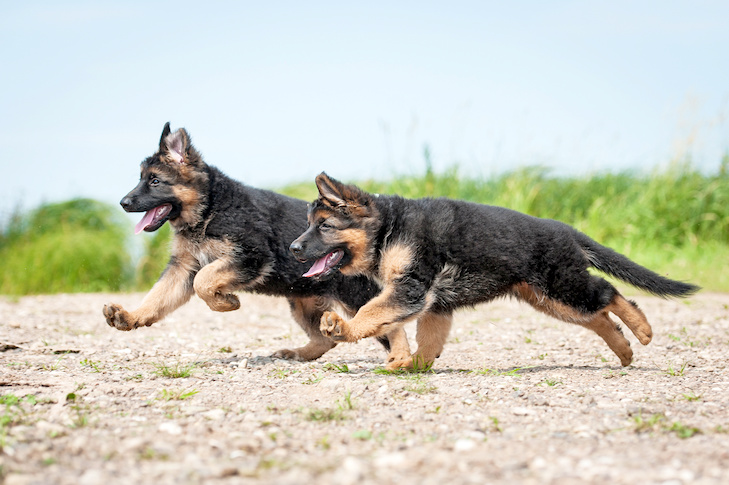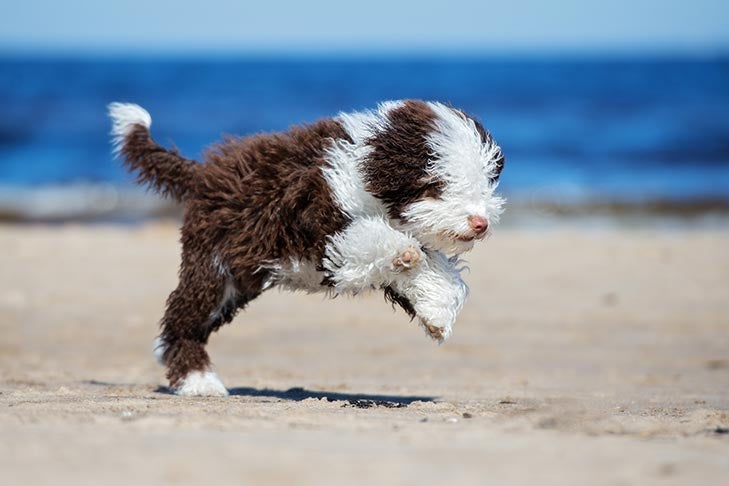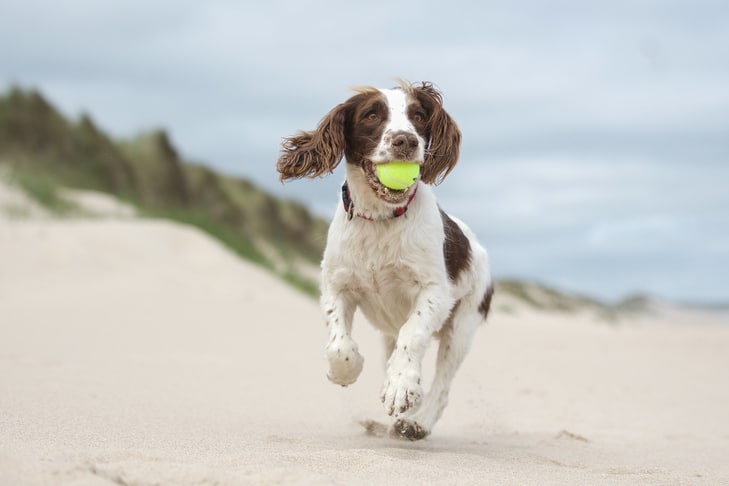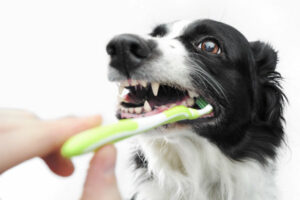It’s summertime, and what could be better than a day at the beach with your best canine pal? For your dog, you should pack beach-friendly dog gear, like canine sunscreen, fresh water, insulated dog bowl, dog water bottle, dog towel, dog-friendly tennis balls, life jacket, and you’re ready to go!
But suppose each time your dog retrieves that tennis ball on the beach, it becomes covered with sand. Before you know it, your outfielder has swallowed a decent amount of those tiny particles. So, what’s the problem?
Dogs who visit the beach are in danger of what veterinarians call intestinal sand impaction. This condition can make dogs very sick and is potentially life-threatening, typically requiring emergency veterinary intervention.
Particles of sand are very tiny, but when they get wet, they become heavy and compact into a solid lump. Any sand your dog swallows naturally becomes wet – and if there’s enough of it, the result can block the entire intestinal tract.

How and Why Would a Dog Ingest Sand?
You may not see your dog actually chowing down on a pile of sand, but you may notice your pal:
- Grabbing a wet, sandy tennis ball over and over
- Digging a big hole to lie in as the sand flies up in their face
- Licking the sand off of their paws and body
- Gulping down salty, sandy water
Usually, swallowing just a little bit of sand won’t really hurt your dog. But add all of these activities together, and before you know it, you and your dog may have a big problem.
Symptoms of Sand Impaction
How can you tell when your enthusiastic playmate has swallowed too much sand? If you’ve gone to the beach and you see the following symptoms, you need to get your dog to a veterinarian right away.
- Restlessness
- Panting
- Vomiting
- Dehydration
- Abdominal pain
- Hard mass in the stomach area
- Constipation
Sand Impaction Treatment
According to Dr. Jerry Klein, Chief Veterinary Officer for the AKC, the veterinarian will ask you questions about your dog’s activities, will examine the dog’s abdominal area, and most likely do an ultrasound or X-ray.
Your dog may need to receive medication for pain and IV fluids to help pass the sand that is lodged in the GI tract. This can require hospitalization. In extreme cases, surgery may be necessary.
Sand Impaction Prevention

There are several steps you can take to prevent your dog from ingesting enough sand to be dangerous. These include:
- Watch your dog closely at the beach. If you see them gobbling up the sand, tell them to “leave it.”
- When you go to the beach, consider taking toys that won’t absorb as much sand as a tennis ball, like a flying disc.
- Take plenty of fresh water and be sure to make it available to your dog at all times. Don’t allow them to drink the salt water. In addition to swallowing sand, they’re at risk for developing saltwater poisoning.
- When you leave the beach, bathe or hose off your pup as soon as possible. This will remove the sand from their coat and feet, prevent them from licking it off, and also make them more pleasant company.
Other Risks for Your Dog at the Beach
Dogs love the beach, and we love having them with us. In order to make sure the experience is a good one, keep the following risks in mind (in addition to sand impaction and saltwater poisoning):
Heatstroke
Since dogs don’t sweat like we do, their body temperature can shoot up dangerously high on a sunny day at the beach, putting them at risk for heatstroke. It’s best to leave them inside during the hottest part of the day and bring them out in the morning or evening. Provide shade and fresh, cold water at all times.
Sunburn
Some dogs are at a greater risk for sunburn than others. Hairless breeds and dogs with white coats are more susceptible, however. It’s not safe to share your sun lotion with your dog. Dog sunscreen and shade are necessities.

Hot Sand
We’ve all walked on sandy beaches in bare feet and had to hot-foot it to the water as fast as we can. If the sand is too hot for your feet, it’s also too hot for your dog’s paws. Dogs can burn and blister their paw pads on hot sand.
Jellyfish
The Pet Poison Helpline recommends keeping dogs away from jellyfish. If they do come into contact with a jellyfish, bring them to the vet immediately. If they eat a dead jellyfish, they’ll probably vomit.
A dog coming into contact with a jellyfish “can cause acute respiratory distress, dry eyes, urinary retention, and cardiac arrest.”
Strong Currents
Many dogs are natural swimmers, but some may need to learn to swim. And any dog can be carried out by a strong current. Consider using a doggy life vest to keep your dog afloat if they get into trouble.
Seaweed
Don’t let your dog eat wild seaweed at the beach. Dry seaweed can contain toxins and will absorb water and swell inside the stomach, which can cause a blockage and result in emergency surgery.
If there’s a beach calling to you, and local laws allow your dog to accompany you there – taking the time to plan and being a responsible owner will contribute to a joyful experience for both of you.







